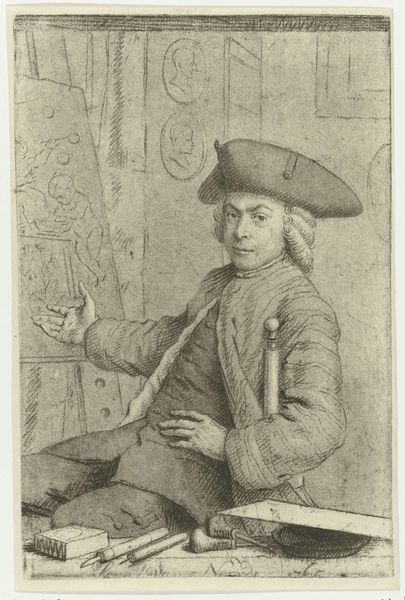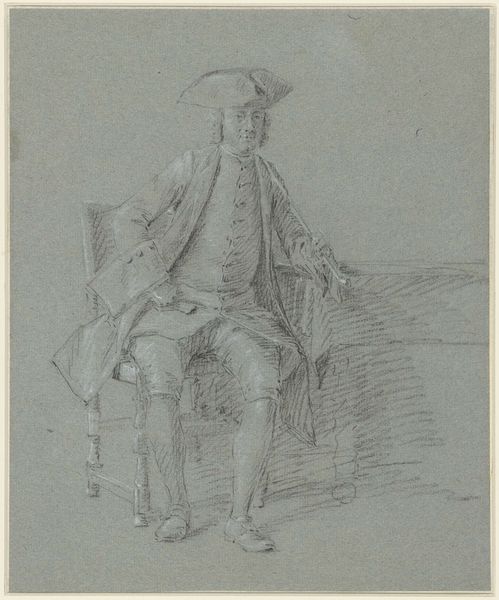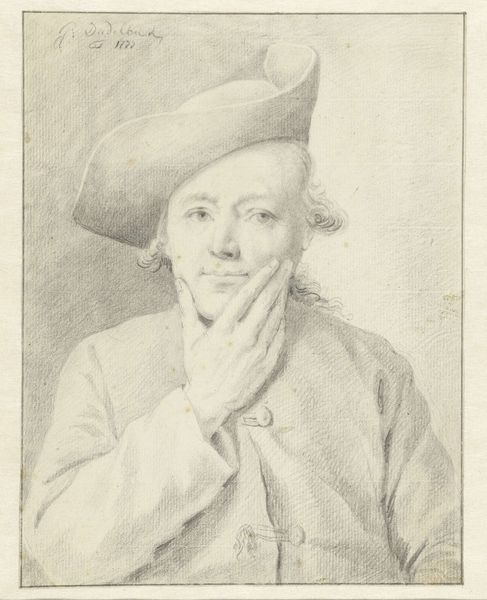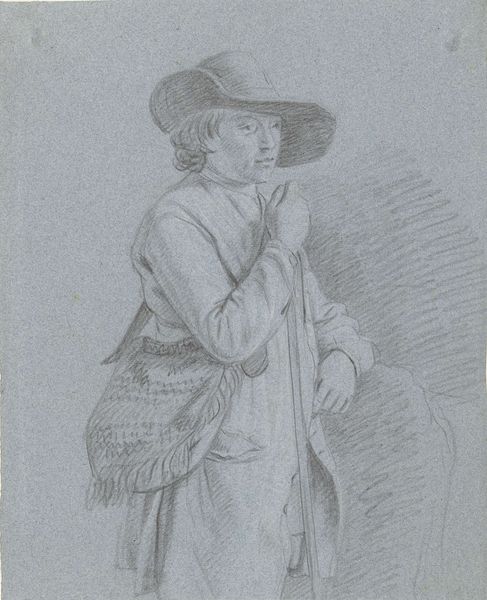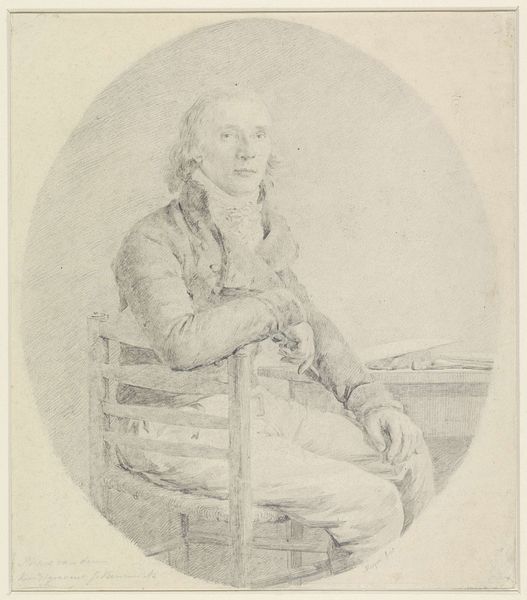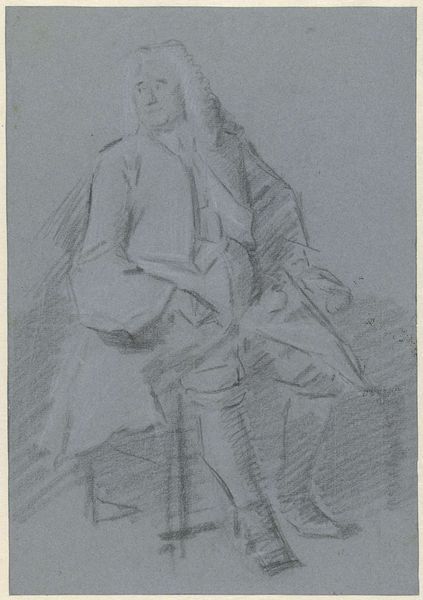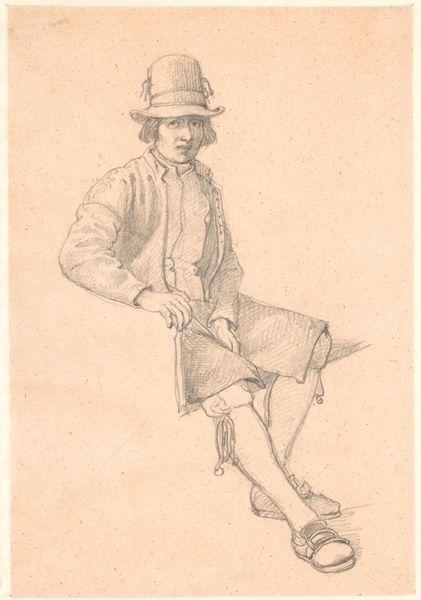
drawing, pencil
#
portrait
#
pencil drawn
#
drawing
#
neoclacissism
#
self-portrait
#
pencil sketch
#
pencil drawing
#
pencil
#
realism
Dimensions: height 208 mm, width 162 mm
Copyright: Rijks Museum: Open Domain
Curator: This is Cornelis van Noorde's self-portrait, rendered in pencil around 1765. It’s part of the Rijksmuseum's collection, a quiet gem of 18th-century artistry. Editor: My first thought? Intimacy. It’s so raw and immediate; the texture feels like a whispered secret from another era. Curator: Exactly! You see the man at work, literally. The tools, the canvas—he’s inviting us into his creative process. Van Noorde positions himself confidently, almost boasting with his hand extended towards the canvas as if it's his greatest achievement. Editor: Let's talk materials, because for me, it’s all about the pencil. It's accessible, democratic even. Forget oils, with all their pigment grinding and elaborate processes, or expensive ink that needed expertise; here’s artistry made with readily available tools. Curator: Absolutely, and in that simplicity, he captures the spirit of his time—a budding interest in the realistic and the relatable. Notice the details in his wig and jacket; but I must ask why does his chair resemble a royal scepter, and is he hinting towards some artistic decree? Editor: Perhaps less decree, more demonstration. Consider where the pencil was situated in 1765: no longer just for preliminary sketches, it's staking its claim as a medium worthy of capturing a likeness with great precision. But still, let us also consider what isn't visible; paper and pencils meant access to a broader range of consumers. Curator: Right, by choosing these humble tools, van Noorde elevates them. He tells a story of access and self-made identity. It whispers about the democratizing nature of artmaking itself! But the composition still reminds me of classical works; that direct gaze— Editor: Though direct, it's not confrontational. The softness of the medium tempers any potential arrogance. It feels approachable and quietly revolutionary by revealing his entire artistic production, with its flaws. Curator: Looking closely, you can almost feel the grit of the pencil on the paper. And the way he renders his own likeness is rather kind, don't you think? Editor: In a way, yes. It’s less about idealized perfection and more about capturing a working man's moment of self-awareness using widely available material, giving us a sense of both the subject and the social landscape of artistic production in his time. Curator: I’ll walk away contemplating just how immediate art can be, regardless of the era. He turned the humble pencil into a timeless piece of self-expression. Editor: And I'm left pondering how accessible art can upend hierarchies, by allowing for beauty with limited and common tools, allowing the labor to come forth for greater understanding.
Comments
No comments
Be the first to comment and join the conversation on the ultimate creative platform.

